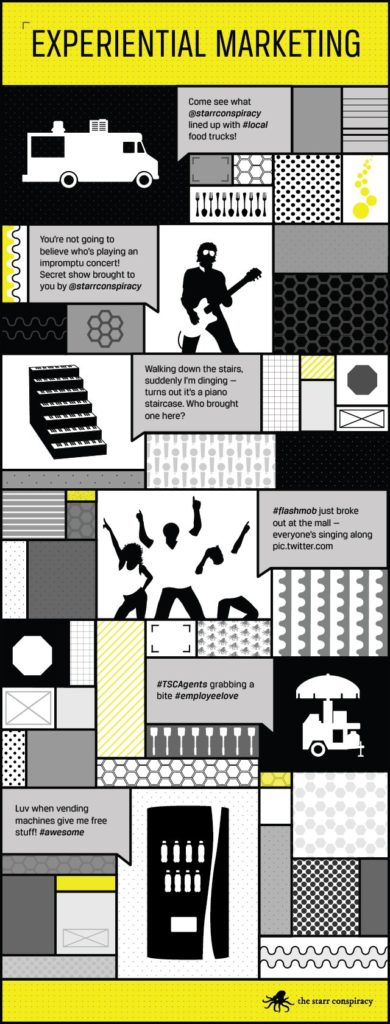
Experiential marketing has changed the way companies and brands can interact with an audience. There can be large events that target huge groups of people, or small interactions designed just for a single person.
But experiential marketing today also has a secondary audience — the social audience.
Messages on social media may be fleeting, but they can be very powerful. Sharing and making recommendations authenticate the event as something people should care about.
One great example of a company using the social nature of a flash mob is T-Mobile. In the video, a huge group of people spontaneously break out in a dance in Liverpool Street Station. You see people talking on phones, taking pictures, texting, and sharing what’s happening around them. That’s exactly what T-Mobile wants them to do, and T-Mobile wants them to do it with T-Mobile phones.
The social nature of experiential marketing even showed up in the NBC show Smash. Even fictitious Broadway on TV used social sharing built into the Hit List experience. Check out the video. At the 2:35 mark, you’ll see how social explodes in the show.
If you’re going to use experiential marketing to get your message across, make it very clear what people should be sharing. You can always automatically load tweets and shares — something retailers have really tapped into. Make the hashtag easy to find and add.
And reply often.
Any team you have executing on an experiential marketing initiative should be prepared to tweet and share “from the ground.” Social conversations are great for virtual interactions, but don’t forget the real-life interactions. Share those as well, and keep the conversation genuine.
So keep your two audiences in mind when using experiential marketing — the people partaking in the experience and those sharing the messages.






